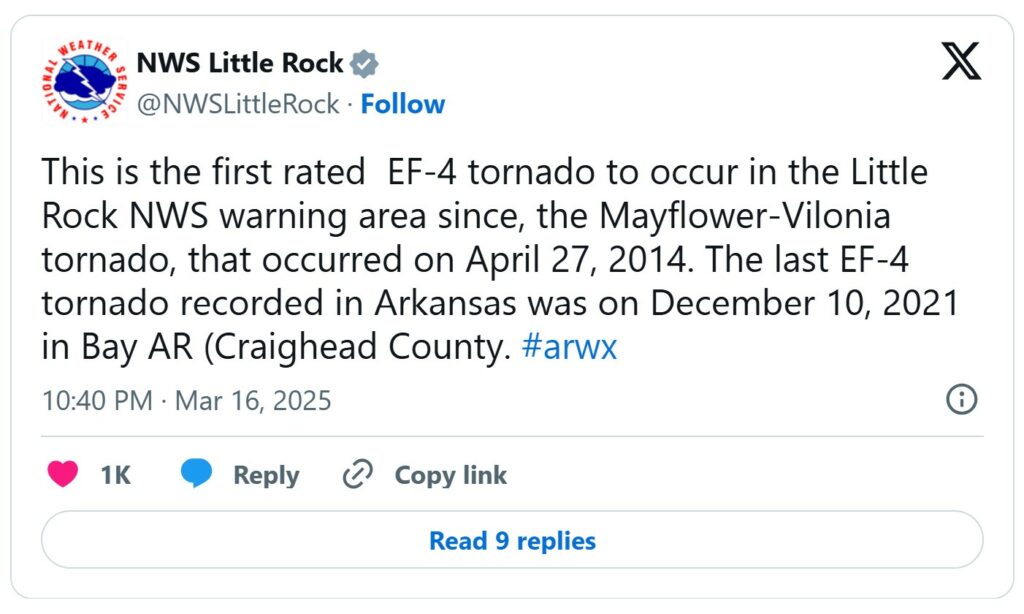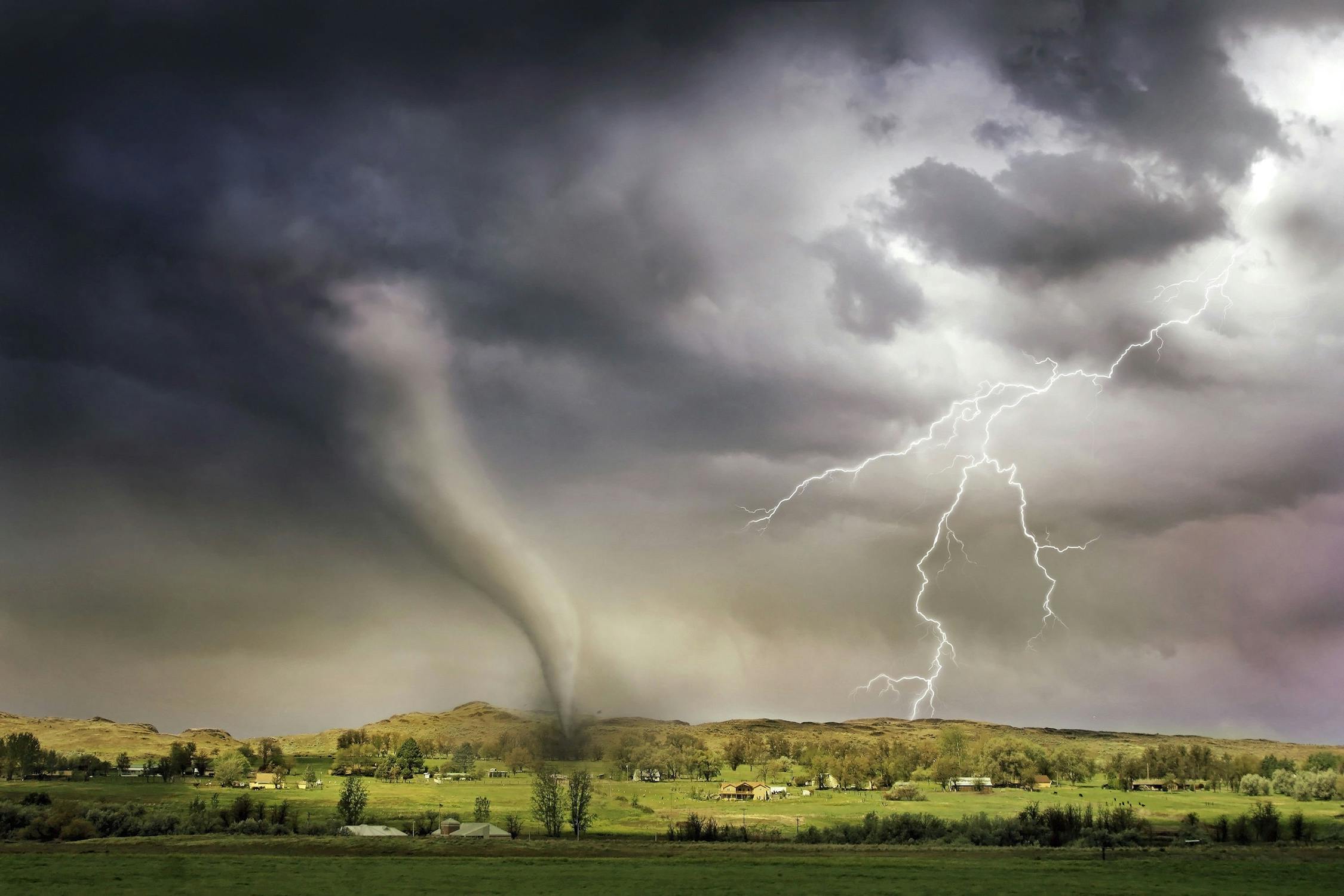Recent severe weather events have left Americans shocked and grieving. In the past few days, a massive storm system has battered eight states with tornados, wildfires, dust storms, and even devastating loss of life. This catastrophic outbreak has claimed 42 lives and disrupted the routines of millions, leaving communities reeling from loss and devastation. The unusual mix of extreme events has raised urgent questions about our changing climate and the future of such destructive weather. Many are wondering if these violent tornados signal a new normal and if similar storms will become more frequent in the coming years. As scientists and officials work to decipher evolving patterns, residents face the reality of damaged homes, compromised infrastructure, and a profound emotional toll. This article examines the tragic events in detail, providing statistics, firsthand accounts, and expert insights into the causes and potential future impacts of this severe weather episode.
Recent Weather Disaster Overview

A powerful storm system unleashed its fury from Friday through Sunday, ravaging multiple regions and leaving behind a trail of destruction. At least 79 tornados have been reported from severe thunderstorm activity, with the final count expected to rise as surveys continue across the country. In Mississippi, one tornado tore through Tylerstown Saturday evening, causing extensive damage and resulting in three fatalities, with additional casualties and missing persons reported. Separately, damage consistent with an EF-4 tornado was noted near Diaz in Jackson County, Arkansas, where winds were estimated at up to 190 mph. In southern Mississippi, a pair of tornado-warned storms swept across Taylorsville. Meanwhile, severe thunderstorms produced large hail, destructive winds, and torrential downpours that led to flash flooding across the affected areas.
Detailed Regional Impact and Statistics

In Oklahoma, strong winds fanned dozens of wildfires across 44 counties. More than 130 fires burned over 170,000 acres and damaged 293 buildings. Additionally, an expansive dust storm swept over West and central Texas, Oklahoma, and parts of Kansas, reducing visibility to under a mile in some areas before spreading into the Midwest and degrading air quality. Nearly 1,100 flights were canceled nationwide between Friday and Saturday, further highlighting the extensive disruption caused by the storm system.
The storm’s toll has been severe across eight states, with the following fatality counts reported:Missouri: 12 fatalities
- Kansas: 8 deaths
- Arkansas: 3 lives lost
- Alabama: 3 fatalities (including losses in Plantersville and Winterboro)
- Texas: 4 lives claimed
- Oklahoma: 4 fatalities, compounded by wildfires and high winds
- North Carolina: 2 deaths, following a tragic incident in Brevard where a falling tree on a trailer claimed the lives of two young boys
Are Tornados Happening More Often?

The issue of increased tornados has become a prominent subject in the aftermath of these events. Some experts believe that warmer temperatures and higher moisture levels are creating more favorable conditions for tornadic activity. Advanced weather models and long-term data comparisons suggest that a warming climate could be intensifying these storms. However, experts caution that improved detection methods may also account for the higher number of reported events. While many attribute the trend to climate change, natural atmospheric variability still plays a significant role. Ongoing research aims to untangle these factors, providing clearer insights into the relationship between climate change and the frequency of tornados.
Read More: New Study Predicts Grim Future for the Arctic by 2100 if Climate Change Persists
The Impact on Communities

The aftermath of these extreme weather events has left deep scars on communities across the affected states. In Mississippi, neighborhoods were devastated by violent tornados that not only destroyed homes but also disrupted lives, leaving families mourning their losses. In Alabama, schools were destroyed, trees uprooted, and more destruction caused grief for residents. Homes, businesses, and infrastructure have all suffered extensive damage, forcing many residents to seek refuge in emergency shelters. Local officials and volunteers are working tirelessly to clear debris, distribute supplies, and support recovery efforts. Community meetings and social media platforms have become spaces for sharing stories of hardship and resilience, underscoring the collective effort to rebuild after the disaster.
Wildfires, Dust Storms, and Aviation Disruptions

The storm’s destructive force extended well beyond the tornados. In Oklahoma, powerful winds ignited dozens of wildfires, forcing mass evacuations and causing widespread property damage. An enormous dust storm swept over West and central Texas, Oklahoma, and parts of Kansas, dropping visibility to under a mile in some areas. This thick dust cloud later drifted into the Midwest, resulting in hazy skies and poor air quality that affected daily life and public health. The extreme weather also disrupted travel across the nation, with nearly 1,100 flights canceled between Friday and Saturday. The combination of wildfires, dust storms, and tornados has created a multi-faceted crisis, straining emergency response efforts and highlighting the vulnerability of critical infrastructure.
Scientific Perspectives and Emergency Preparedness

The recent outbreak has intensified scientific efforts to understand severe weather trends. Researchers are employing advanced computer models and satellite imagery to analyze the atmospheric conditions that led to these events. Studies indicate that a warmer atmosphere, which holds more moisture, can fuel larger and more destructive storms. While there is evidence of an increase in extreme weather occurrences, experts stress that the data is complex and that improved detection technology may also contribute to higher reported numbers. In parallel, local and state officials are re-evaluating emergency response strategies. Enhanced early-warning systems, mobile alerts, and regular disaster drills are being implemented to better prepare communities for future events. Urban planners are also rethinking infrastructure designs to bolster resilience and reduce potential losses when similar storms strike again.
Read More: NASA Map Shows Alarming Future of US Cities as 40 Million People Face Rising Oceans
Conclusion

The recent severe weather outbreak stands as a stark reminder of nature’s unpredictable power. The combined assault of 79 tornados, rampant wildfires, and sweeping dust storms has left communities devastated and lives forever changed. Detailed statistics from Missouri, Kansas, Arkansas, Alabama, Mississippi, Texas, Oklahoma, and North Carolina reveal the widespread and tragic impact of this storm system. While debates continue about the role of climate change versus improved detection methods in the apparent increase in tornados, the urgent need for robust emergency preparedness is undeniable. As researchers work to decode these complex weather patterns, communities are uniting to rebuild and support one another. This collective resilience offers a glimmer of hope, even as the nation braces for future challenges brought on by a changing climate.

